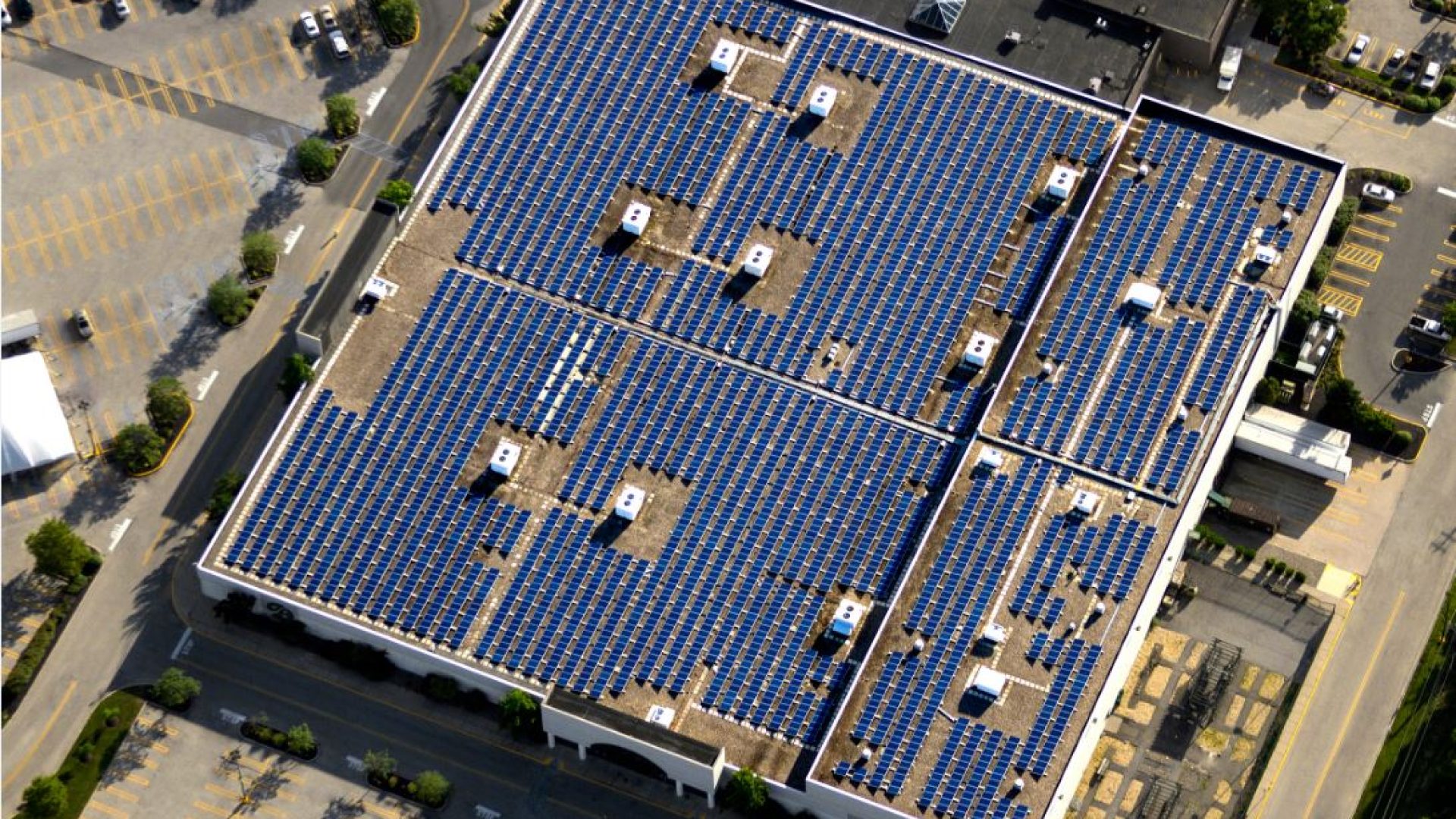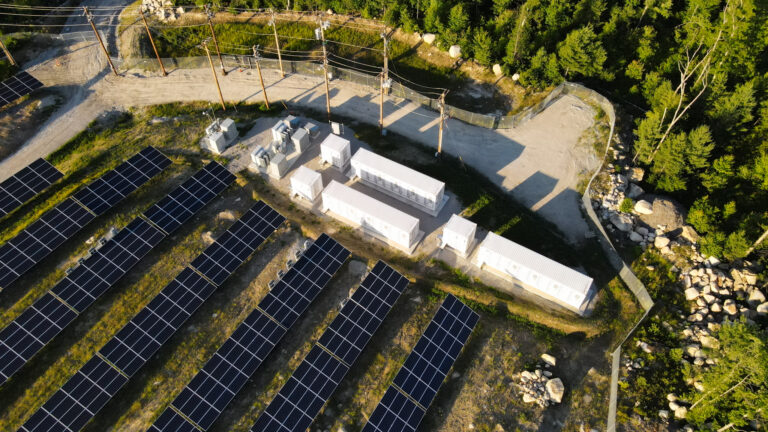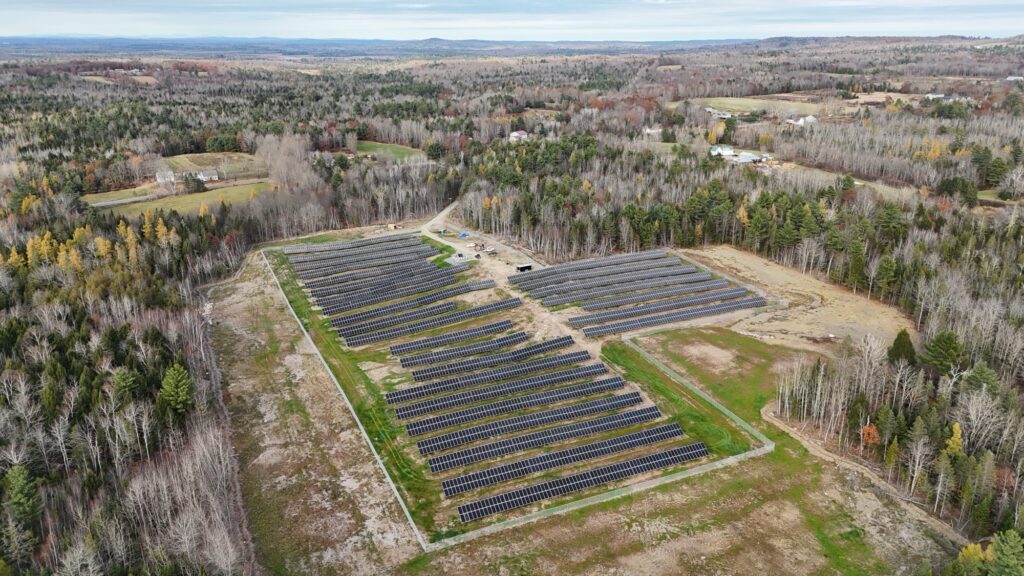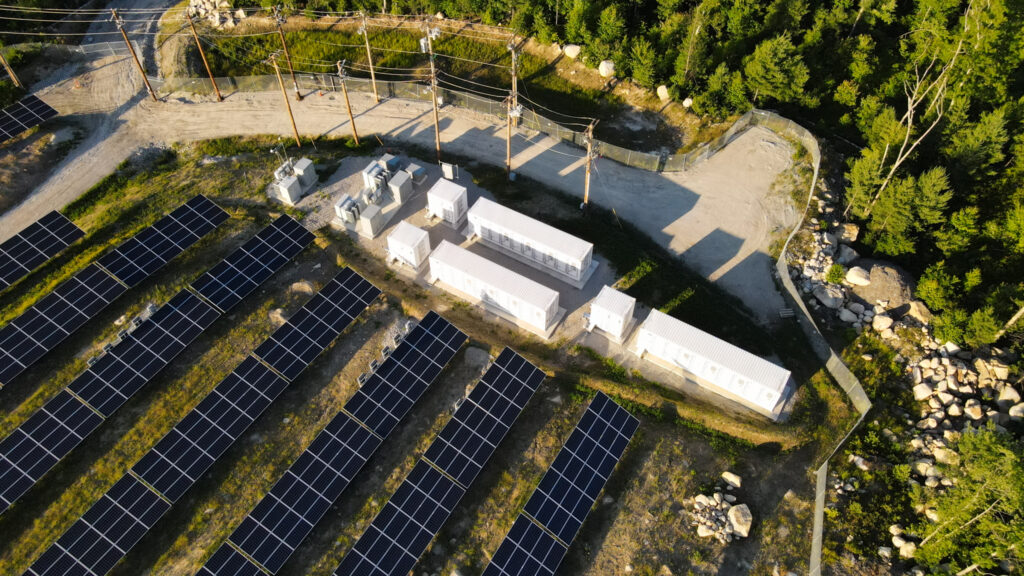Commercial properties consume a significant amount of electricity, making energy efficiency a key concern for property owners. Installing solar panels is one of the most effective ways to lower utility bills, increase asset value, and future-proof properties against fluctuating energy costs.
Additionally, federal and state incentives make solar more accessible than ever, enabling businesses to achieve rapid returns on investment. However, navigating the solar installation process can be complex. This guide will walk you through what you need to know about commercial solar—from assessing your property’s suitability and understanding financing options to choosing the right system and ensuring long-term performance.
Why Should Commercial Property Owners Consider Solar?
1. Reduce Energy Costs & Improve Profitability
Electricity bills are one of the largest ongoing expenses for commercial properties. By generating your own solar power, you can lower or even eliminate your reliance on grid electricity, reducing your operational costs and improving your bottom line. Many businesses see energy savings of 20-50% depending on system size and local energy rates.
2. Take Advantage of Federal and State Incentives
Solar incentives can significantly lower the upfront cost of installing a solar system. Programs such as:
- Investment Tax Credit (ITC): Allows building owners to deduct 30% of the cost of installing a solar energy system from federal taxes.
- Modified Accelerated Cost Recovery System (MACRS): A tax depreciation benefit that accelerates cost recovery, improving return on investment.
- State-Specific Incentives: Many states offer rebates, solar
3. Increase Property Value
Commercial buildings with solar energy systems are more attractive to tenants and buyers who value sustainability and long-term cost savings. Studies show that buildings with lower utility costs and green energy solutions command higher property values.
4. Meet ESG and Sustainability Goals
Many corporations and tenants are prioritizing environmental, social, and governance (ESG) goals. Installing solar allows you to market your property as a green and sustainable space, making it more attractive to environmentally conscious businesses. Some cities and states also require buildings to meet emissions reduction targets, making solar an essential strategy for compliance.
5. Energy Independence & Grid Resilience
Adding solar to your property can protect your business from rising electricity costs and provide energy resilience. If paired with battery storage, solar can offer backup power during outages, reducing downtime and increasing operational stability.
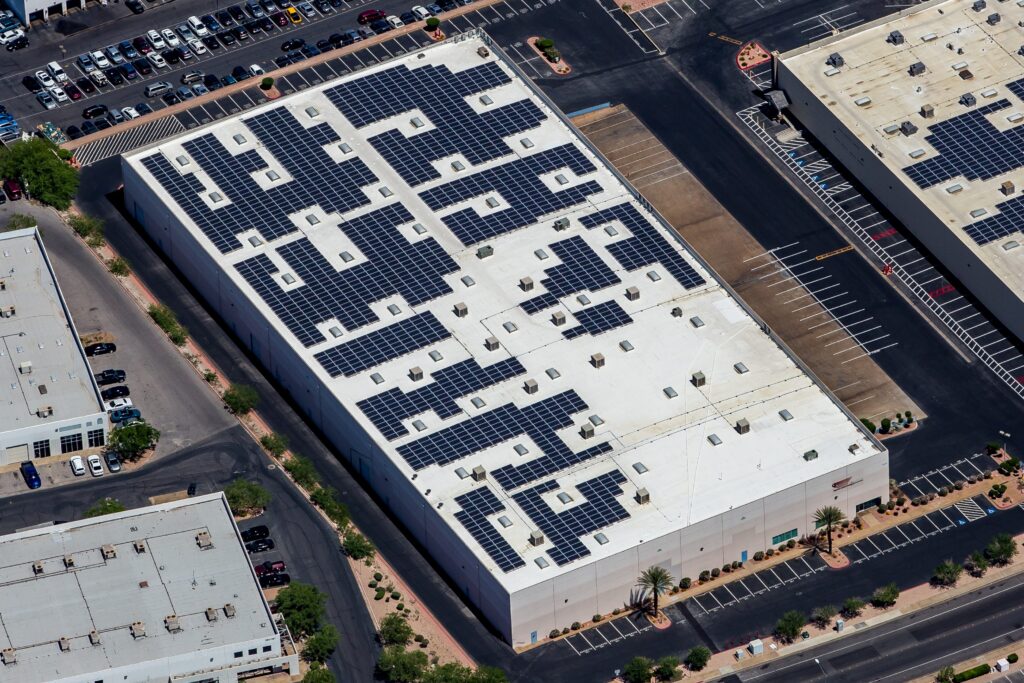
How Commercial Property Owners Can Install Solar
1. Evaluate Your Property’s Suitability for Solar
Before making any commitments, it’s essential to determine whether your commercial building can support a solar energy system. Here are the key factors to consider:
Roof or Site Suitability
- Roof Type & Condition: Flat roofs (common in commercial buildings) are ideal for solar panels, but older roofs may need repairs or reinforcement before installation.
- Roof Material: Solar is compatible with many materials like TPO, EPDM, and metal. However, some materials may require specialized mounting solutions.
- Available Roof Space: A solar system requires substantial open space free of obstructions like HVAC systems, vents, or skylights.
- Orientation & Sun Exposure: The more direct sunlight exposure, the better. South-facing roofs generate the most energy in the U.S., but east/west orientations can also be viable.
- Weight Load Capacity: Solar panels and racking add weight to a roof. A structural analysis ensures the roof can support the added load.
Ground-Mounted & Carport Solar Options
If rooftop solar isn’t feasible, alternative options include:
- Ground-mounted solar – Requires available land near the facility and is ideal for large-scale solar needs.
- Solar carports – Utilize parking lots to generate power while providing shade for vehicles.

Energy Usage Analysis
- Review past utility bills (typically 12–24 months) to assess energy consumption and peak demand.
- Identify energy inefficiencies – Solar works best in combination with energy efficiency improvements like LED lighting and upgraded HVAC systems.
- Determine optimal system size based on current energy needs and expected future demand.
Grid Connection & Utility Requirements
- Check local interconnection policies – Some utilities have net metering, allowing excess energy to be credited to future bills.
- Understand peak demand charges – Some commercial properties may still incur demand charges, which could impact total savings.
2. Understand Ownership and Financing Options
Commercial solar projects involve multiple financing structures. The right option depends on your financial strategy, tax situation, and energy savings goals. Here are a few popular options:
- Direct Purchase: Buy the system outright and take advantage of all financial benefits, including tax credits and energy savings.
- Best for: Businesses looking to maximize long-term savings and take full advantage of incentives.
- Power Purchase Agreement (PPA): A third-party developer like Syncarpha finances, owns, and maintains the solar system while you purchase the electricity at a lower, fixed rate.
- Best for: Building owners looking for zero upfront costs while securing lower electricity rates.
- Solar Lease: Lease the system with little or no upfront cost, benefiting from savings without ownership responsibilities.
- Best for: Businesses that want predictable savings but don’t want ownership responsibilities.
- Property Assessed Clean Energy (PACE) Financing: Use a long-term loan repaid through property taxes, making solar investment easier to manage.
- Best for: Businesses that want long-term, low-cost financing with repayment through property taxes.
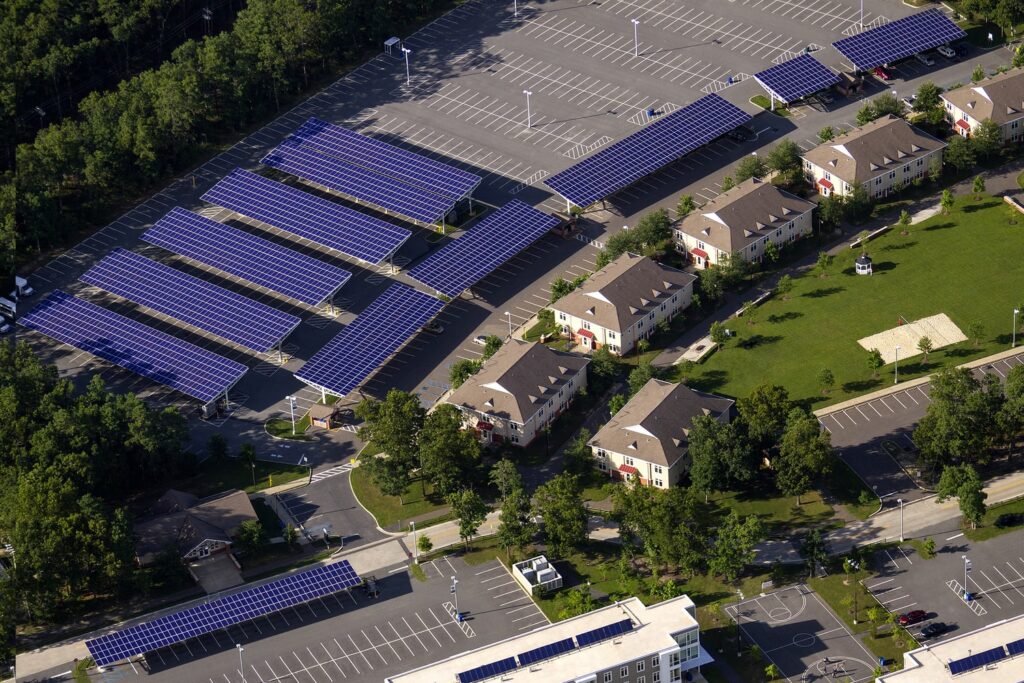
3. Work with a Trusted Solar Partner
Selecting an experienced solar provider ensures a seamless process from start to finish. Here’s what to look for:
Key Qualifications to Check:
- Experience with commercial solar projects – Ensure the company has a track record with businesses of similar size and industry.
- Licensing & Certifications – NABCEP certification and state-specific licensing demonstrate industry expertise.
- Project Portfolio & References – Review case studies and request references from past clients.
- Financial Stability – Verify the provider’s ability to support long-term service agreements.
- Warranties & Maintenance Services – A strong warranty (20–25 years for panels) and a maintenance agreement ensure ongoing performance.
Questions to Ask a Solar Provider:
- What is the expected ROI for my business?
- How does solar interact with my current utility provider?
- Can you provide a detailed analysis of projected energy savings?
- What financing options do you offer?
- What happens if I sell my building?
- Do you provide performance monitoring and maintenance?
4. Solar Installation & Project Timeline
Once you’ve decided on a provider and financing method, the actual installation follows a structured process. The typical timeline is 6–12 months, depending on permitting, utility approvals, and project size.
Step-by-Step Process
- Site Assessment & Energy Analysis
- Roof/site evaluation for shading, structural integrity, and panel placement.
- Utility bill review to determine system size and expected savings.
- Grid interconnection feasibility analysis.
- Engineering & System Design
- Finalizing a customized solar system layout.
- Electrical & structural engineering approvals.
- Securing building permits.
- Financing & Contracting
- Finalizing financial agreements (PPA, lease, loan, or direct purchase).
- Signing necessary paperwork with lenders, investors, and utilities.
- Permitting & Utility Interconnection
- Submitting permit applications to local and state authorities.
- Securing utility approval for grid connection.
- Addressing any zoning or regulatory requirements.
- Installation & Construction
- Solar panels and mounting structures installed.
- Electrical work completed and tied into the existing system.
- System testing and commissioning.
- Final Inspections & Activation
- Utility company approval and final inspections.
- Interconnection with the grid and system activation.
- Performance monitoring setup for real-time tracking.
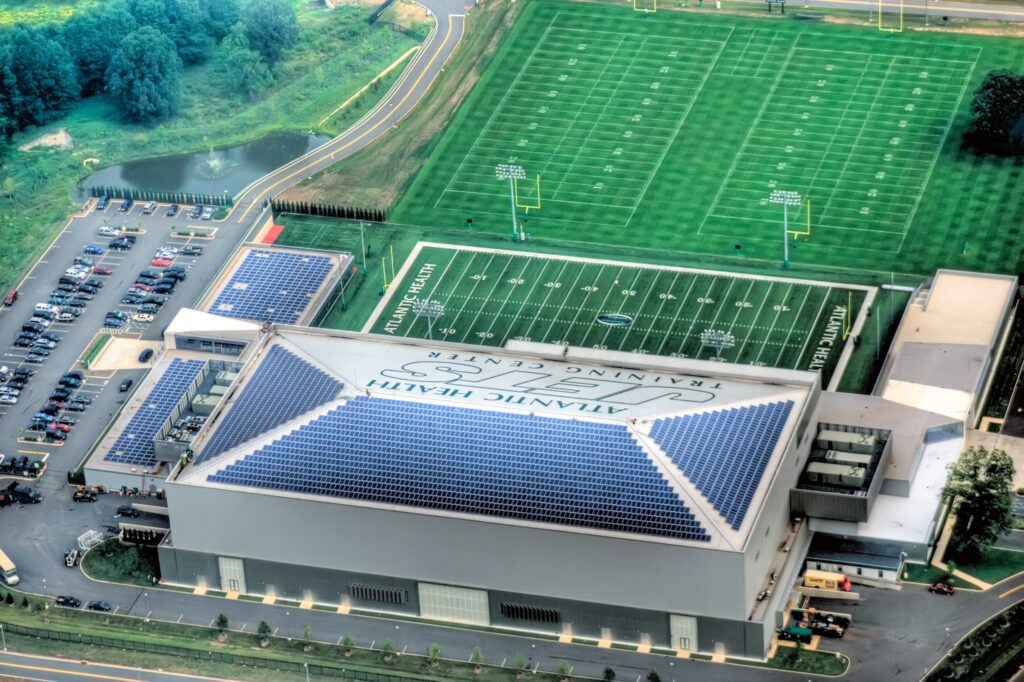
Final Thoughts
Installing solar on a commercial building is a smart financial and environmental decision that provides long-term cost savings, increased property value, and energy security. By understanding your property’s solar potential, financing options, and the installation process, you can make an informed decision that benefits your business.
Need Help Navigating the Solar Process? Contact Syncarpha Capital
Navigating the complexities of commercial solar can be challenging, but you don’t have to do it alone. Syncarpha specializes in developing, designing, financing, owning and operating a variety of solar project types that maximize energy savings and financial benefits. Whether you’re looking for a feasibility assessment, financing guidance, or a trusted solar partner to develop your project, we’re here to help.
Sources:
- U.S. Department of Energy (DOE): The Business Case for Solar Energy
- National Renewable Energy Laboratory (NREL): Solar PV System Performance and Pricing Trends
- Database of State Incentives for Renewables & Efficiency (DSIRE): State & Federal Solar Incentives
- U.S. Department of the Treasury: Investment Tax Credit (ITC) Guide
- IRS: Modified Accelerated Cost Recovery System (MACRS)
- Lawrence Berkeley National Laboratory (LBNL): How Solar Panels Impact Commercial Property Value
- Rocky Mountain Institute (RMI): Solar + Storage for Commercial Buildings
- National Renewable Energy Laboratory (NREL): Comparison of Solar Financing Models
- Solar Energy Industries Association (SEIA): Understanding Power Purchase Agreements (PPAs)
- North American Board of Certified Energy Practitioners (NABCEP): Certified Solar Installer Directory
- Solar Energy Industries Association (SEIA): Checklist for Choosing a Solar Provider
- Interstate Renewable Energy Council (IREC): Permitting & Interconnection Best Practices

